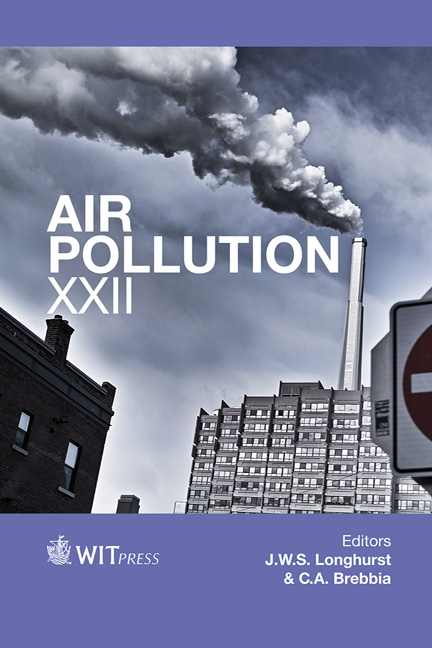Learning From 24 Years Of Ozone Data In Portugal
Price
Free (open access)
Transaction
Volume
183
Pages
12
Page Range
117 - 128
Published
2014
Size
956 kb
Paper DOI
10.2495/AIR140101
Copyright
WIT Press
Author(s)
N. Barros, M. P. Silva, T. Fontes, M. C. Manso & A. C. Carvalho
Abstract
Ozone (O3) is a secondary pollutant mainly produced in the troposphere by photochemical reactions with high impact on human health. In this work hourly average O3 concentrations from the Portuguese air quality network collected during 24 years (1988–2011) were analysed. The background time series were assessed by environment type (urban, suburban and rural) and considering several criteria: the annual mean O3 concentration, the Directive 2008/50/EC O3 long-term objective and the 2005 WHO Guideline for protection of human health and, finally, the hourly information threshold exceedances. The trend of annual mean O3 concentration data and the maximum daily eight-hour mean ozone concentration data were both annually compared using an one-way ANOVA followed by a Tamhane post-hoc comparison test. In both series, although of an instable trend, a tendency for an increase of the mean O3 concentrations was found. On the other hand, after 2006, for all stations types, the normalized number of exceedances for public O3 information are significantly decreasing (p<0.05). In this paper, the O3 trend will be analyzed and discussed, contributing to improve knowledge of long time series of O3 concentrations in Portugal.Keywords
tropospheric ozone, background stations, time series, trends, exceedances.





